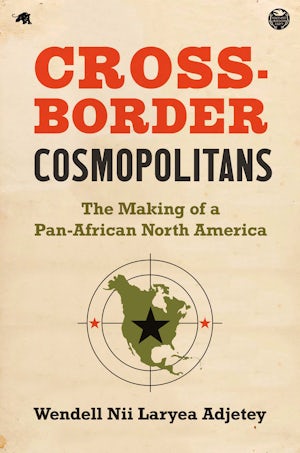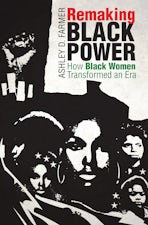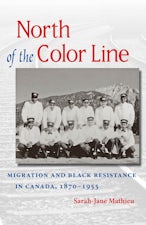Cross-Border Cosmopolitans
The Making of a Pan-African North America
By Wendell Nii Laryea Adjetey
424 pp., 6.125 x 9.25, 21 halftones, 4 maps, 7 tables, notes, index
-
Paperback ISBN: 978-1-4696-7211-3
Published: January 2023 -
E-book EPUB ISBN: 978-1-4696-6993-9
Published: December 2022 -
E-book PDF ISBN: 979-8-8908-5987-7
Published: December 2022 -
Hardcover ISBN: 978-1-4696-6992-2
Published: January 2023
Buy this Book
- Paperback $32.95
- Hardcover $99.00
- E-Book $22.99
For Professors:
Free E-Exam Copies
Awards & distinctions
Finalist, 2024 Association for the Study of African American Life and History Book Prize
By contending that twentieth-century global Black liberation movements began within the U.S.-Canadian borderlands as cross-border, continental struggles, Cross-Border Cosmopolitans reveals the revolutionary legacies of the Underground Railroad and America's Great Migration and the hemispheric and transatlantic dimensions of this history.
About the Author
Wendell Nii Laryea Adjetey is assistant professor of post-Reconstruction U.S. and African Diaspora history at McGill University, where he holds the William Dawson Chair. He also goes by Nii Laryea Osabu I, Atrékor Wé Oblahii kè Oblayéé Mantsè.
For more information about Wendell Nii Laryea Adjetey, visit
the
Author
Page.
Reviews
"An important book . . . Timely and essential given the narrow and almost ubiquitous emphasis on black victimization in contemporary public discourses. The book’s perspective . . . positions itself as a valuable methodological option for crafting and telling the history of diasporic Blacks in different parts of the world, and for approaching the study of civil rights, independence, and revolutionary movements."—Ethnic and Racial Studies
"Wendell Nii Laryea Adjetey's Cross-Border Cosmopolitans: The Making of a Pan-African North America is an impressive study of Pan-Africanism and the Black Power movement in twentieth-century North America. Adjetey succeeds in placing African Canadians, West Indians, and African Americans into a single frame of analysis, as he demonstrates the ways in which developments in North America, the Caribbean, and South Africa were multidirectional in impact and consequence. A signal achievement, Cross-Border Cosmopolitans is as welcome as it is sorely needed."—Michael Gomez, New York University
"Stressing transborder mobility as an enduring characteristic of Black life in the borderland nexus of Canada and the United States, Adjetey deftly argues that Black people's transborder movements engendered a kind of 'interspatial citizenship' that reflected a lasting search for security, belonging, and a sense of home. A fascinating and original examination of the transnational orientation and border-crossing practices of 'African North Americans' in the long twentieth century."—Russell Rickford, author of We Are an African People: Independent Education, Black Power, and the Radical Imagination
"This powerful book pays a deserving homage to the architects of and transnational actors in the imagination and pursuit of a collective Black world in the complicated affairs of the twentieth century, revealing with clarity and eloquence the depth of activism and the seriousness of struggles to confront domination, exploitation, and colonization. The far-reaching impact of movements, migrations, and border crossings are cogently analyzed to provide the context for understanding vibrant organizations that demanded freedom, justice, and liberation."—Toyin Falola, the University of Texas at Austin
“A stellar work of global diasporic Black history that tells a new story about how American-born people of African descent, as well as Caribbean Black immigrants, forged both a Pan-African movement and a Pan-African community in English North America along the Canadian-U.S. border.”—Joe William Trotter Jr., author of Workers on Arrival: Black Labor in the Making of America



